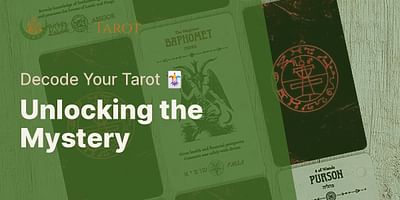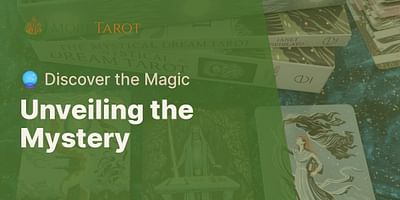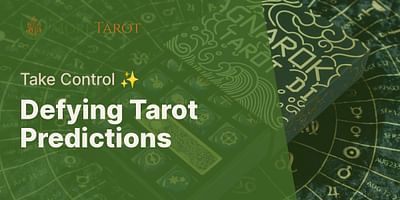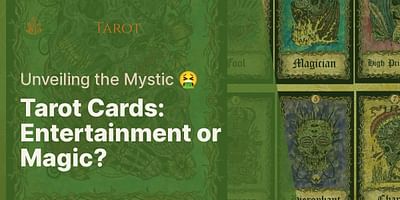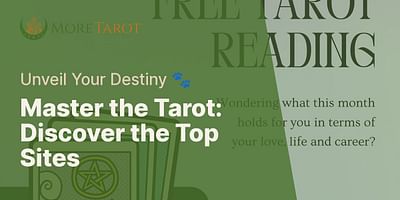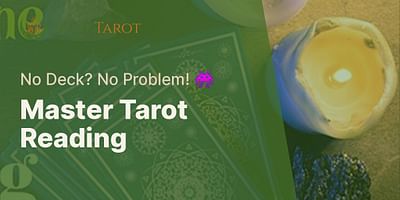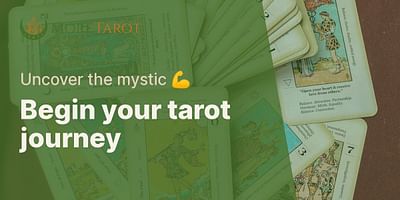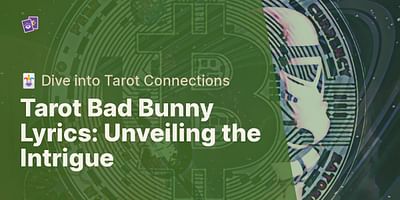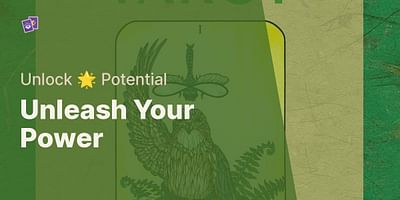Tristian Collins is a highly capable Tarot reader and psychic medium. With over ten years of experience in the Tarot field, he utilizes his intuitive skills to deliver guidance and clarity. In addition to his reading practice, Tristian is an effective instructor, offering classes and workshops on Tarot reading and psychic development.
Dear Reader,
Thank you for your curiosity about the fascinating history and development of tarot card reading. The origins of tarot cards are shrouded in mystery, but they are believed to have emerged in the 15th century in Europe. Initially, tarot cards were not used for divination but were instead played as a game called Tarocchi. It wasn't until later that they became associated with fortune-telling and spiritual guidance.
The exact origins of tarot cards are still debated among scholars, but many believe that they were inspired by playing cards brought to Europe from the Islamic world. These playing cards, known as Mamluk cards, featured intricate designs and symbols that captivated European artists and thinkers.
The first known tarot deck, the Visconti-Sforza deck, was created in the 15th century for the ruling families of Milan, Italy. This deck consisted of 78 cards, divided into the Major Arcana and the Minor Arcana. The Major Arcana, also known as the trump cards, depicted powerful archetypal figures such as The Fool, The Magician, and The High Priestess. The Minor Arcana, similar to modern playing cards, consisted of four suits: Cups, Swords, Wands, and Coins.
Over time, tarot cards gained popularity across Europe, and different regions developed their own unique decks. The symbolism and artwork of these decks varied, reflecting the cultural and artistic influences of each era and location. Notable examples include the Marseille Tarot, which became the standard for tarot card reading in the 18th century, and the Rider-Waite Tarot, created in the early 20th century and still widely used today.
Tarot card reading as a form of divination began to emerge in the late 18th century, with the publication of books linking the cards to astrology, numerology, and the occult. These interpretations provided a framework for understanding the deeper meanings behind the cards and their relevance to personal and spiritual growth.
In the 20th century, tarot card reading experienced a resurgence in popularity, thanks in part to influential figures such as Arthur Edward Waite, Aleister Crowley, and Carl Jung. Waite's Rider-Waite Tarot deck, with its rich symbolism and imagery, became a cornerstone of modern tarot practice. Crowley's Thoth Tarot deck, infused with his esoteric knowledge, offered a more mystical and complex interpretation of the cards. Jung, the renowned psychologist, saw tarot as a tool for self-reflection and used it in his therapeutic work.
Today, tarot card reading continues to evolve and adapt to the needs and interests of a diverse range of practitioners. Tarot decks now come in a wide variety of styles and themes, catering to different spiritual traditions, personal preferences, and cultural backgrounds. Tarot card reading has become a valuable tool for self-discovery, personal growth, and gaining insight into life's challenges and opportunities.
At More Tarot, we are dedicated to providing you with a comprehensive understanding of tarot card history and reading techniques. Our expertly crafted interpretations and insightful spreads will help you unlock the wisdom and guidance that tarot cards have to offer. Whether you are a beginner or an experienced practitioner, we invite you to explore the rich history and transformative power of tarot card reading with us.
With warmest regards,
Raven Nightshade




